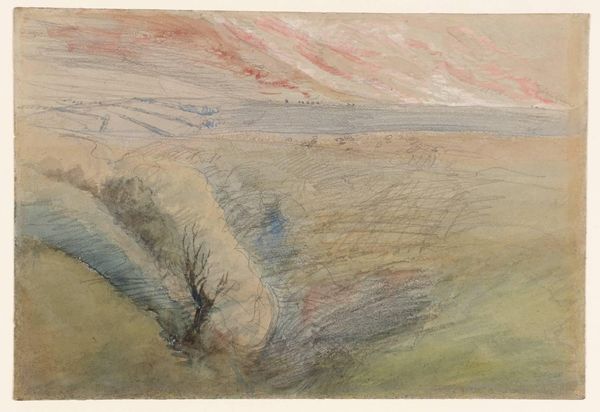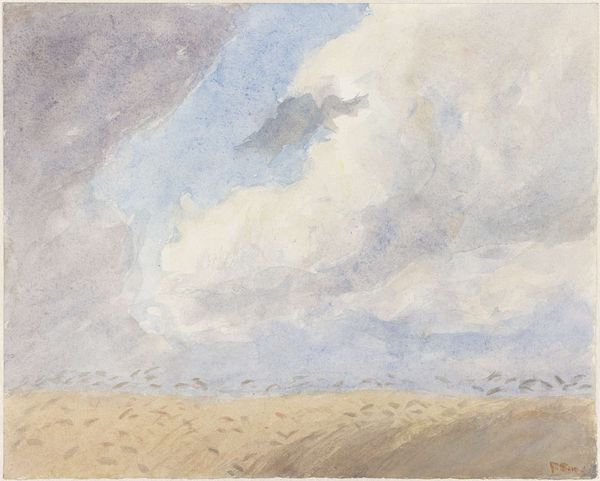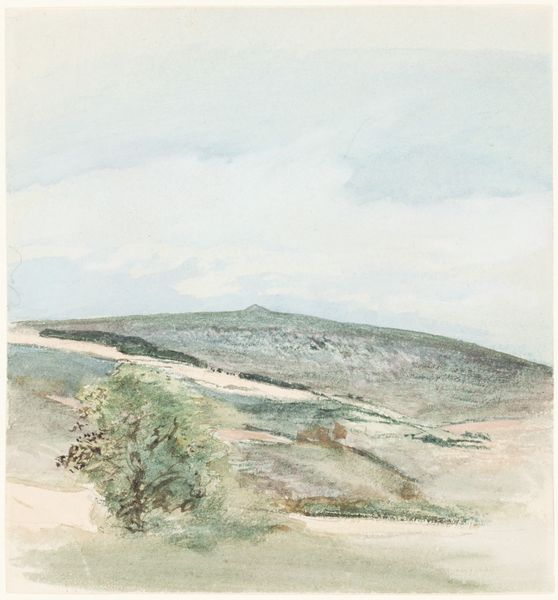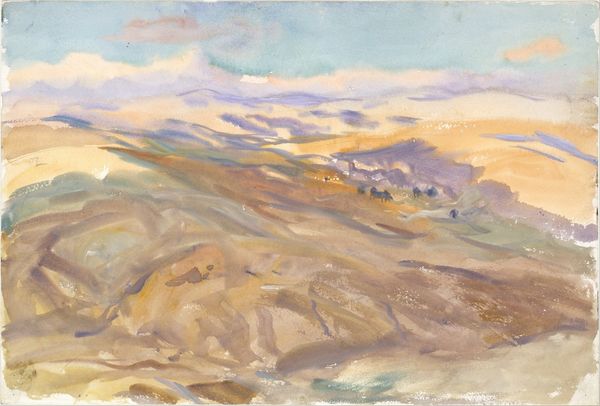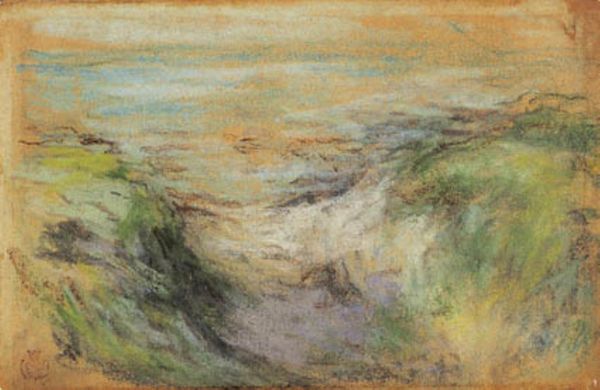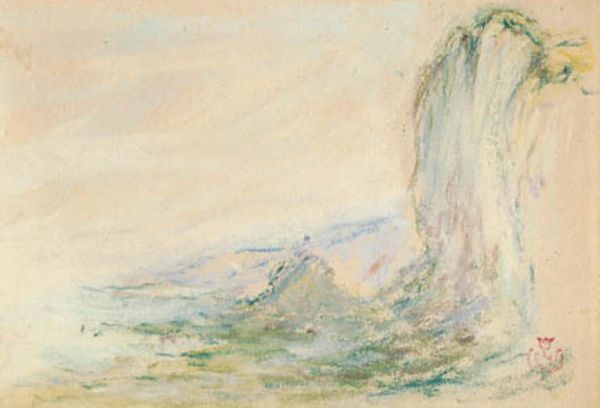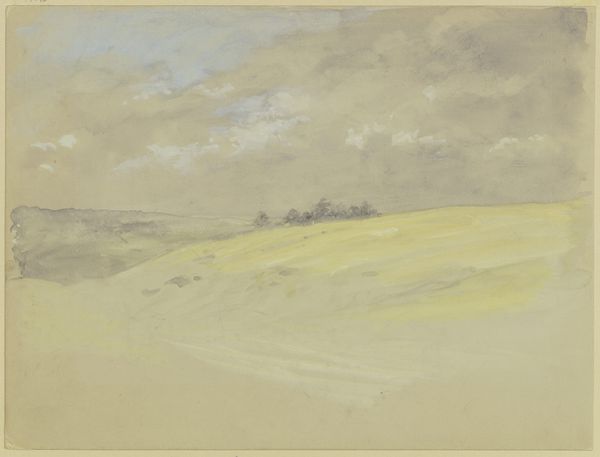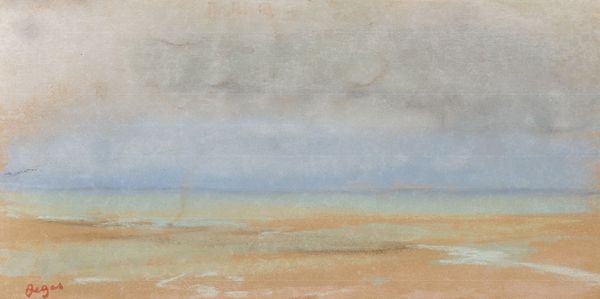
Copyright: Public Domain: Artvee
J.M.W. Turner created this watercolor, "A Yorkshire River," using delicate washes of colour to suggest form and space. The painting's structure reveals a keen interest in atmosphere and light. Turner employs horizontal bands of diluted pigment to delineate the sky, the distant sea, and the riverbanks, creating an ethereal, almost dreamlike effect. These bands subtly shift in tone, evoking a sense of atmospheric perspective where the intensity of colour fades into the distance. Turner's use of colour here is not descriptive but suggestive, aiming to capture the transient effects of light and weather rather than the literal appearance of the scene. The blurring of lines between representation and abstraction anticipates later artistic movements, which challenge viewers to find meaning not in the depiction of reality but in the interplay of colour and form. This approach invites a semiotic reading, where colours and shapes function as signs pointing beyond themselves, reflecting an engagement with the sublime and the shifting nature of perception.
Comments
No comments
Be the first to comment and join the conversation on the ultimate creative platform.
